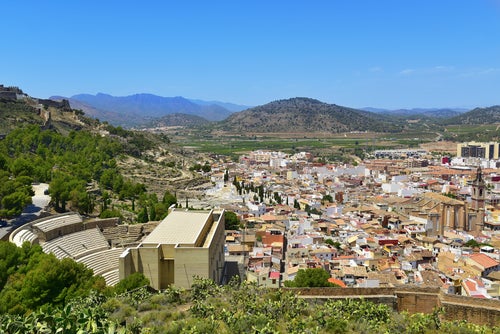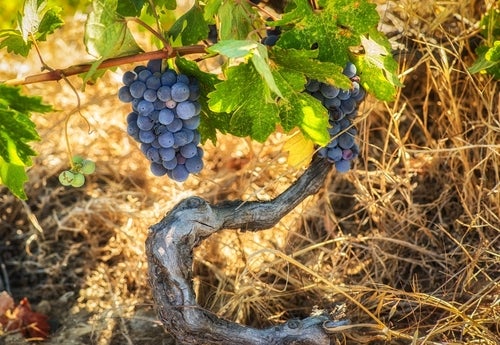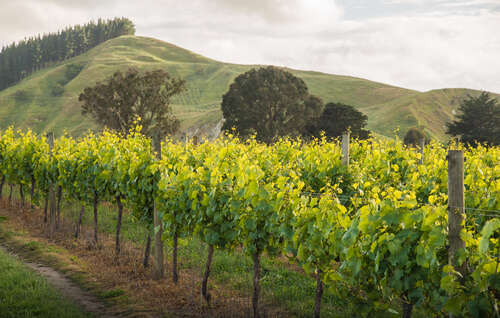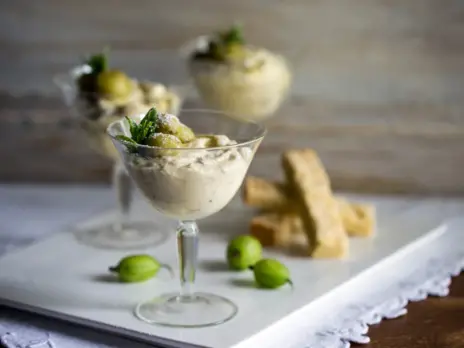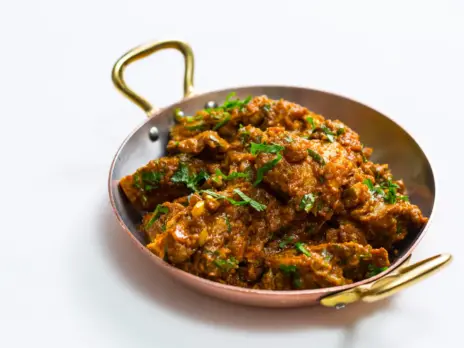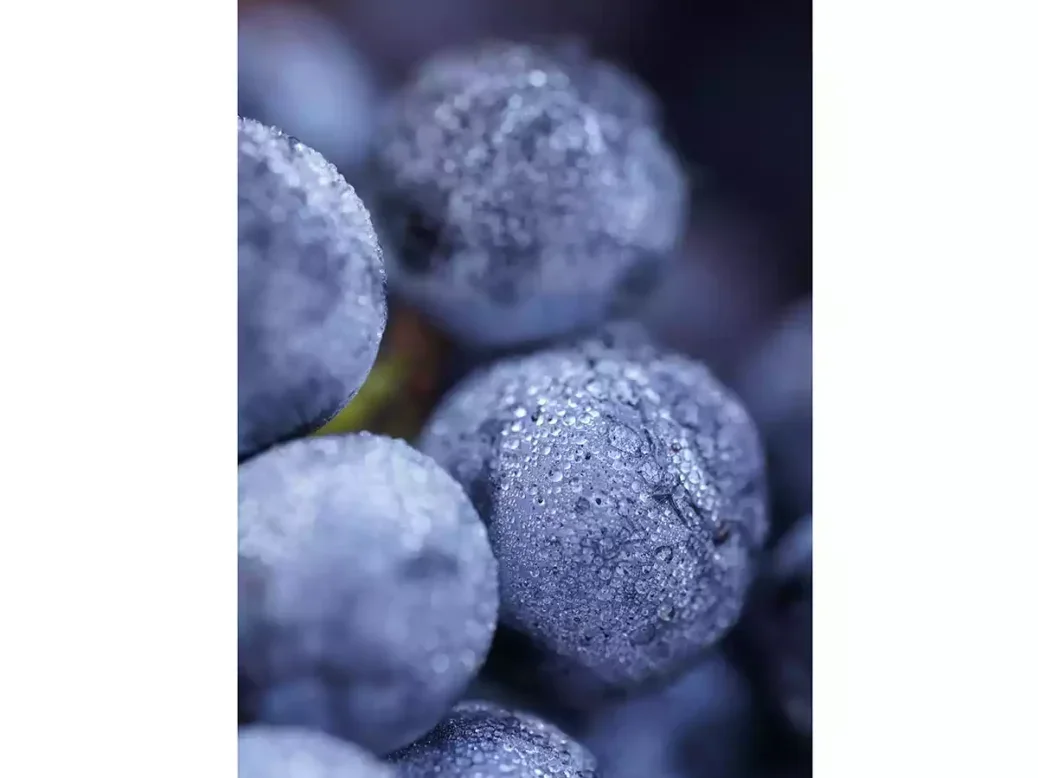
Cream of yeast (or crème de levures in French) is a propagated cocktail of wild yeasts from the vineyard, prepared in a laboratory to a population of 109 cells/ml. It is the ultimate, highly secure use of wild fermentation, based on DNA and microbial analysis.
The genetic analysis confirms that the wild yeast flora has indeed driven the alcoholic fermentation, while the microbial testing guarantees that no unwanted yeasts or bacteria threaten the process. Cream of Yeast allows a winemaker to express microbial terroir and vintage without worrying about fermentation drift. Highly secure and scientifically proven, it outperforms conventional wild fermentation and pied de cuve. While the costs remain substantial, making it inaccessible to many, proponents are eager to share their accumulated knowledge, paving the way for broader adoption. As this expertise becomes more widespread, the costs are expected to decrease, making this advanced technique more accessible, even to artisanal producers.
It was Fabrice Bacquey, the head winemaker at Château Phélan Ségur in St-Estèphe, who introduced me to this cutting-edge technique. Bacquey provided an in-depth explanation of the process. Cream of Yeast originates from wild yeast colonies found on grape skins. Two weeks prior to harvest, Phélan Ségur selects 4.4lb (2kg) of grapes from each vineyard plot and transports them to the Excell laboratory. There, each batch is fermented naturally. The top layer of fermenting must is then carefully skimmed off to propagate the yeast flora on a culture plate, eventually achieving a concentration of 109 cells/ml. This resulting yeast culture is bottled and used for fermentation in the winery. A single 50cl bottle of Cream of Yeast is capable of fermenting up to 100hl (2,650 US gallons) of must.
At each stage—grape reception, fermentation, propagation, bottling of Cream of Yeast, finished wine inoculated with Cream of Yeast—a microbial test is carried out to ensure that there is no deviation. The documentation accompanying each Cream of Yeast bottle specifies the yeast profile, detailing whether it contains any secondary yeast species such as Brettanomyces, Hanseniaspora uvarum, or Torulaspora delbrueckii. It also outlines other key characteristics, including volatile acidity (VA) production levels. Prior to dispatching the Cream of Yeast to the winery, a DNA test confirms its composition, which is later cross-referenced with a second DNA analysis of the finished wine. This double-check ensures that the fermentation was indeed carried out by the same yeast flora originally sourced from the vineyard, safeguarding a truly authentic and secure wild fermentation. Since the launch of the Cream of Yeast project at Phélan Ségur in 2020, Cream of Yeast has consistently outperformed commercial yeast strains (from Laffort) and conventional wild fermentation, excelling in sensory quality, with zero deviations and complete fermentation. A brief description of the winery’s project is provided below.
The first Cream of Yeast trial took place in 2020, focusing on the heart of the Phélan Ségur vineyard, L’Enclos Cabernet Sauvignon. That year, wines inoculated with Cream of Yeast were compared with those fermented using commercial yeasts, demonstrating the superior qualities of Cream of Yeast. The Cream of Yeast wines exhibited significantly higher levels of thiols, with citrus-scented notes of 3SH being present 13 times above the threshold, compared to just six times above the threshold in the wines that had been fermented with the commercial yeast.
In 2021, the harvested grapes were fermented using:
Fresh 2021 Cream of Yeast
2020 Cream of Yeast
Commercial yeasts.
The wines made with fresh Cream of Yeast performed the best, while those fermented with the previous year’s Cream of Yeast did not exhibit the same level of success. The reason for this discrepancy remains unknown.
In 2022, the grapes were fermented with:
Fresh 2022 Cream of Yeast
2021 Cream of Yeast
2020 Cream of Yeast
Conventional wild fermentation
Commercial yeasts.
Once again, the wines inoculated with fresh Cream of Yeast showed the best performance. The previous years’ Cream of Yeasts did not yield the same results. Additionally, some issues arose with the wild fermentation tanks. DNA testing revealed that one tank, which was thought to be wild fermented, had actually undergone fermentation by commercial yeast due to contamination in the winery. Another wild fermentation tank, however, was successfully fermented by the vineyard’s native wild yeast flora, as confirmed by the DNA test. Yet this fermentation was halted midway, highlighting the challenges of wild fermentation. The cause was an insufficient yeast population (only 103 cells/ml), which disrupted the process.
As for contamination, it can happen with pied de cuve, which is a simple propagation of vineyard yeast. Two weeks prior to harvest, a producer selects grapes from the vineyard for natural fermentation. The successful pied de cuve is then used to inoculate other fermentation tanks. The lower pH of these early-picked grapes helps suppress the growth of unwanted yeasts, while the reduced sugar content—and lower osmotic pressure—encourages the proliferation of Saccharomyces cerevisiae, the primary fermentative yeast. This method is considered highly effective, offering a more controlled and smooth wild fermentation process. Château d’Yquem, for instance, employs pied de cuve, and according to the estate’s former head winemaker Sandrine Garbay, it plays a crucial role in helping yeast develop a higher tolerance to osmotic pressure before it is introduced to the fully matured, botrytized must.
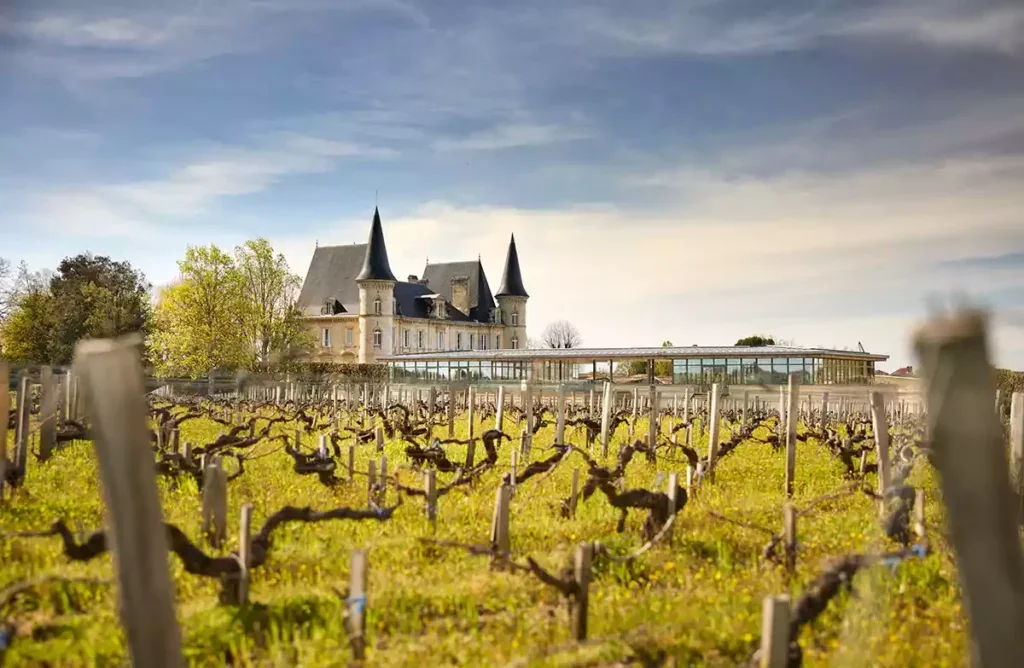
As with wild fermentation, however, pied de cuve carries its own risks. For example, the pied de cuve can be contaminated by rogue yeasts, as Château Mauvinon in St-Emilion experienced with its Vin Méthode Nature certified natural wine. Similarly, commercial yeasts from neighboring wineries can inadvertently ferment the pied de cuve, which may compromise the purity of terroir expression, though it does not degrade the quality. A similar issue was reported by Professor Axel Marchal of the ISVV Bordeaux. Additionally, the use of pied de cuve from different plots can result in cross-contamination, diluting the uniqueness of the plot. Fabrice Bacquey does not think it would be interesting to lose the specificity of the site. While the use of Cream of Yeast has always brought out the best expression of each plot. With over 25 years of experience at Phélan Ségur, Bacquey is deeply familiar with the distinct personality of each vineyard. He believes that Cream of Yeast is the most reliable and effective method for expressing both terroir and vintage. In 2023, another carefully controlled experiment was conducted; and by 2024, all the plots at Phélan Ségur were fermented exclusively with Cream of Yeast.
Weaving tradition and innovation
Despite the remarkable performance of Cream of Yeast, its cost remains prohibitive. The price for Cream of Yeast for a single plot is €750 (50cl of Cream of Yeast to ferment 100hl of must). Given that Phélan Ségur operates 15 plots, the annual cost for Cream of Yeast alone totals at least €11,250—roughly 20 times more expensive than commercial yeast. The expense increases further due to ongoing trials and the various variables involved. As such, Cream of Yeast is currently out of reach for smaller producers, benefiting primarily the larger estates—at least for the time being. I have found hidden friction between artisanal producers/workers and the grands châteaux in the Médoc. And this “capitalism” disparity is unfavorable for the harmony of the region. Laura, who manages tourism at La Rose de Pauillac, the only cooperative in Pauillac, frames the cooperative as a “resistance” against the “encroachment” of the crus classés. In the 1980s, the cooperative owned 130ha (320 acres) of vineyards. However, following the “invasion” of vineyards by the crus classés, including renowned estates such as Lafite and Mouton, only 23ha (57 acres) remain today.
I encountered a similar sense of disparity when speaking with the guide at Château Ferrière, whose parents are small artisanal growers in St-Estèphe. She expressed concern over what she saw as the exploitation of smaller producers by larger luxury wineries, a situation driven by an imbalance of power. It seems to me that a subtle class hierarchy still exists in France, particularly in the countryside, where a sense of inequality lingers—especially when some advantages remain accessible only to the affluent. The guide spoke positively, however, of her encounter with the current owner of Château Ferrière, Claire Villars-Lurton, who, she noted, possesses a genuine warmth and appreciation for every vigneron, regardless of their status.
When I asked Bacquey about this, he responded that the door at Phélan Ségur is always open to everyone. The estate is eager to share its knowledge, with the goal of spreading the Cream of Yeast method and fostering greater diversity in wine quality, based on both terroir and the positive variations of each vintage. As more wineries adopt Cream of Yeast, the cost of analysis will decrease, making the method more accessible. Bacquey is committed to advancing this process in the public interest—a highly commendable philosophy.
“I appreciate the future spread of Cream of Yeast, but I personally will not use it,” said Matthieu David-Beaulieu, co-owner of Château Coutet in St-Emilion. Château Coutet, which has been producing organic wines since 1601—well before the term was even coined—uses only indigenous yeast. David-Beaulieu believes that the level of control exerted by Cream of Yeast goes beyond what is necessary. Since current wild-fermentation practices present no issues for him, he sees no reason to interfere with the natural fermentation process. He acknowledges, however, that his stance is shaped by his position of authority within the estate. “If you are an employee and not in a position to take risks, Cream of Yeast is a very positive choice, while ensuring an expression of terroir,” he added.
Christian Seely—general manager of Château Suduiraut, Pichon Baron, and other AXA Millésimes properties—needs that certainty despite his position of authority. For his authentic grands crus, no deviation is permissible, and conventional wild fermentation simply carries too much risk. Seely authorized the use of Cream of Yeast at Château Suduiraut in 2014 and Château Pichon Baron in 2015. He went on to explain his philosophy to me in detail, emphasizing his goal of achieving both terroir expression and vintage character. In the first year of Cream of Yeast use, the Excell laboratory suggested selecting the “champion yeast” from the vineyard, focusing on the best yeast strains for Cream of Yeast propagation. Seely, however, opted to maintain the same proportion of yeast colonies in the Cream of Yeast as found in the vineyard, ensuring the authenticity of the vineyard’s personality. Seely also decided to use Cream of Yeast from a single plot to ferment the entire production, a more cost-effective approach compared to Phélan Ségur’s practice of propagating yeast flora from each individual plot. While Phélan Ségur’s method is better suited to a more detailed expression of each plot, Pichon Baron’s approach offers a more pragmatic solution for many producers, particularly smaller, artisanal estates.
Another prestigious winery in Napa Valley, California, also employs Cream of Yeast, in collaboration with UC Davis. This winery selects a specific yeast strain from each plot annually, aiming for precise fermentation kinetics and a consistent, optimal flavor profile. The benefit is a high level of control, but the trade-off is the significant cost involved. Furthermore, while this method ensures consistency, it may reduce the expression of microbial terroir and vintage variation—an outcome that would likely be unacceptable to natural-wine producers. Nevertheless, this highlights the vast potential for exploration, as Cream of Yeast remains a relatively new and evolving technique.
Cream of Yeast enables a precise, safe, and terroir-driven expression of wine, allowing for a true reflection of both the vintage and the vineyard. It stands in contrast to the possible homogenization of wines with the use of commercial yeasts. The Cream of Yeast method has also highlighted the inherent instability of conventional wild fermentation and pied de cuve, where contamination, unpredictability, and insufficient yeast populations can disrupt the process. In this respect, Cream of Yeast clearly outperforms these traditional methods.
The main drawback, however, remains its cost, which will only become more accessible as adoption increases, potentially benefiting small artisanal producers. There is also a philosophical debate at play, particularly when Cream of Yeast is used to select specific, favorable yeast strains. For low-intervention producers, this approach may feel like an overreach. Indeed, while expressing terroir and practicing low-intervention winemaking often overlap, they are not synonymous. Thanks to advances in technology, producers now have a wider array of choices. Yet this also underscores the importance of understanding the concepts of terroir, natural-wine making, and low intervention in order to select the method that best aligns with one’s vision. Wine has always been both an art and a science, ever since the advent of modern enology. Today’s winemakers must strike a balance between these two realms, weaving tradition with innovation to craft a cultural product that is both inspired and grounded in history. ▉

